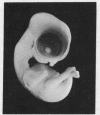Abstract
Electromyographic recordings from individual identified ankle muscles of the 7-day chick embryo (stage 31) were used to determine the organization of motor output at a developmental stage shortly after the onset of spontaneous motility in the leg. During spontaneous motility of the embryo, the electromyographic recordings from the gastrocnemius, peroneus, and tibialis muscles displayed bursts of motor unit activity which alternated with periods of little or no activity. Since the control of skeletal muscle in the chick embryo is neurogenic rather than myogenic, these findings imply that the motoneurons to a given muscle are driven by a common source. Since flexor and extensor muscles are attivated at different times, different central connections to flexor and extensor motoneurons must be present in the central nerbous system of the 7-day embryo. Moreover, since inhibition is known to play an important role in the selective activation of agonist and antagonist muscles, the present results suggest that functional inhibitory synapses may be present in the lumbosacral central nervous system at this stage of development. The basic pattern of muscle activation observed in the 7-day embryo is similar to that seen in older embryos. Since these patterns appear prior to the time at which motor responses to sensory stimulation of the leg can be demonstrated, it is likely that the neural pattern generating circuits for selective activation of muscles are established in the central nervous system without reliance on functional reflexes.
Full text
PDF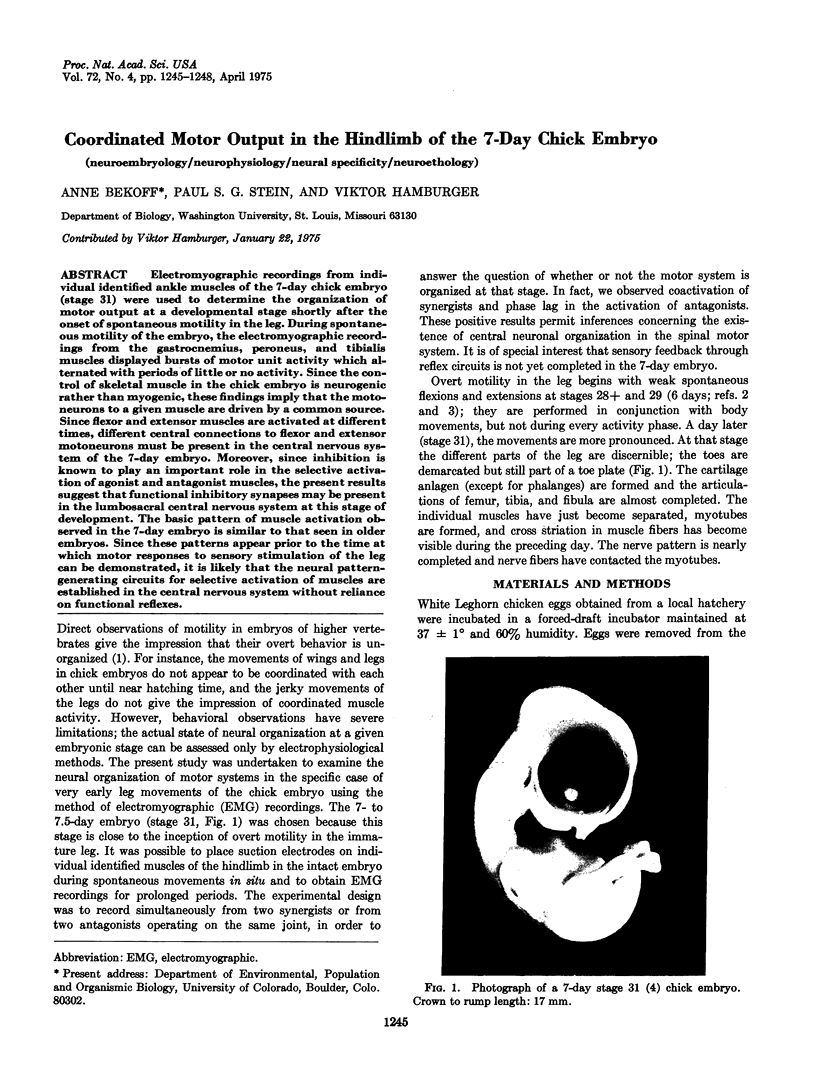
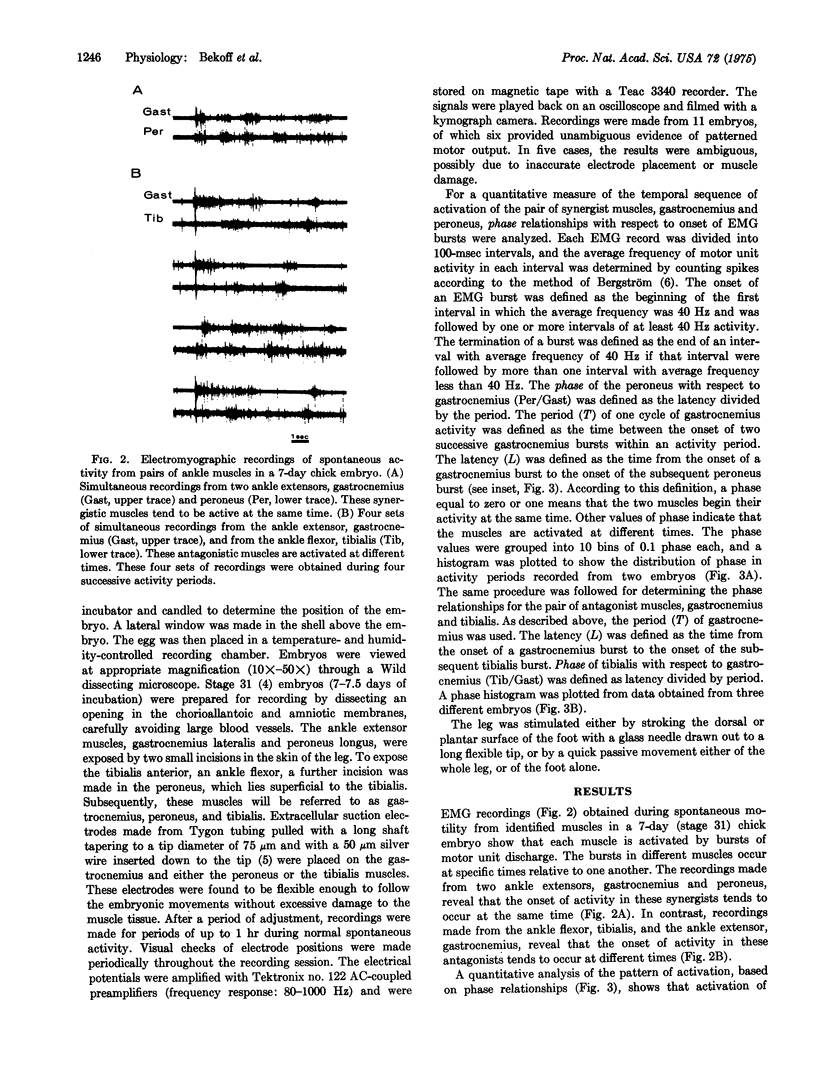
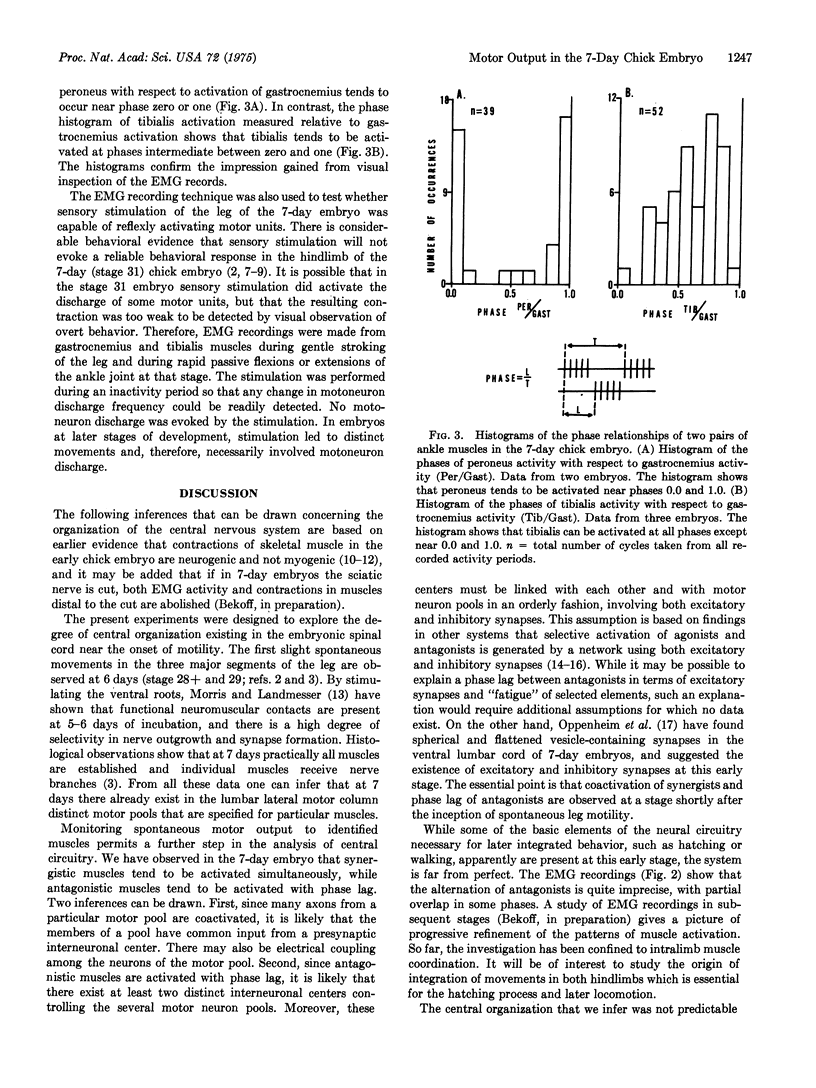
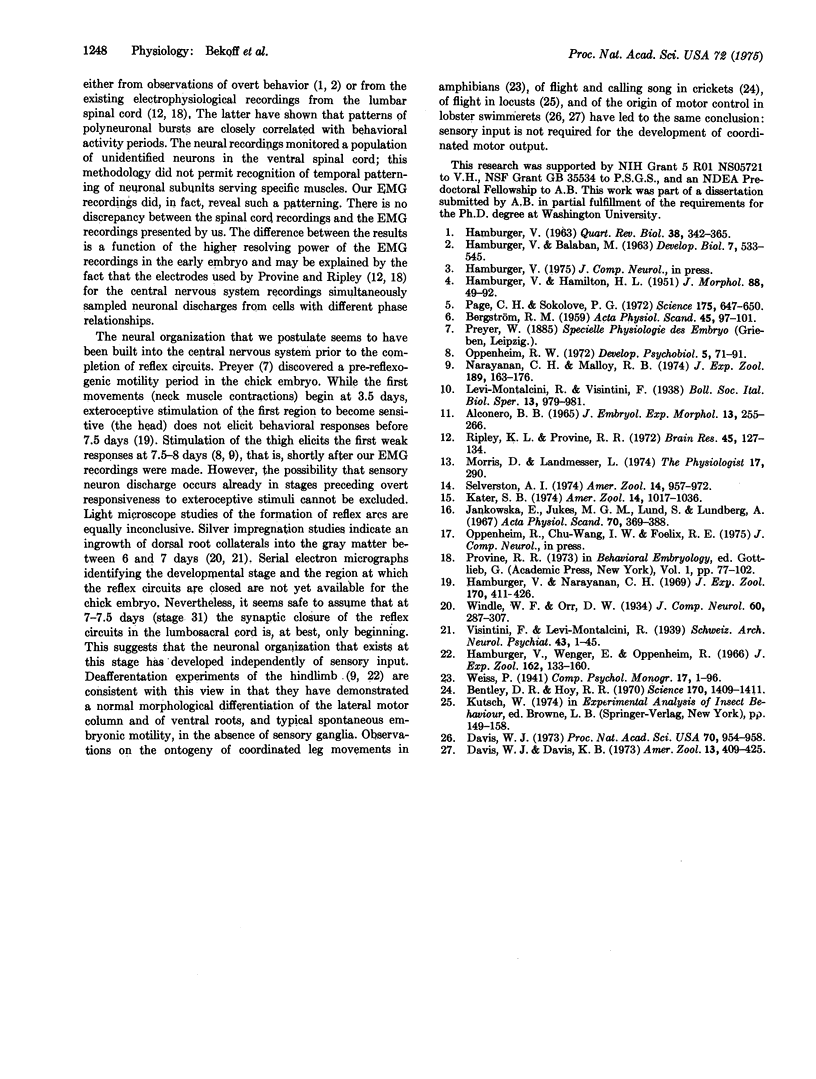
Images in this article
Selected References
These references are in PubMed. This may not be the complete list of references from this article.
- Alconero B. B. The nature of the earliest spontaneous activity of the chick embryo. J Embryol Exp Morphol. 1965 Jun;13(3):255–266. [PubMed] [Google Scholar]
- BERGSTROM R. M. The relation between the number of impulses and the integrated electric activity in electromyogram. Acta Physiol Scand. 1959 Mar 31;45:97–101. doi: 10.1111/j.1748-1716.1959.tb01680.x. [DOI] [PubMed] [Google Scholar]
- Bentley D. R., Hoy R. R. Postembryonic development of adult motor patterns in crickets: a neural analysis. Science. 1970 Dec 25;170(3965):1409–1411. doi: 10.1126/science.170.3965.1409. [DOI] [PubMed] [Google Scholar]
- Davis W. J. Development of locomotor patterns in the absence of peripheral sense organs and muscles. Proc Natl Acad Sci U S A. 1973 Mar;70(3):954–958. doi: 10.1073/pnas.70.3.954. [DOI] [PMC free article] [PubMed] [Google Scholar]
- HAMBURGER V., BALABAN M. Observations and experiments on spontaneous rhythmical behavior in the chick embryo. Dev Biol. 1963 Mar;6:533–545. doi: 10.1016/0012-1606(63)90140-4. [DOI] [PubMed] [Google Scholar]
- HAMBURGER V. SOME ASPECTS OF THE EMBRYOLOGY OF BEHAVIOR. Q Rev Biol. 1963 Dec;38:342–365. doi: 10.1086/403941. [DOI] [PubMed] [Google Scholar]
- Hamburger V., Narayanan C. H. Effects of the deafferentation of the trigeminal area on the motility of the chick embryo. J Exp Zool. 1969 Apr;170(4):411–426. doi: 10.1002/jez.1401700404. [DOI] [PubMed] [Google Scholar]
- Jankowska E., Jukes M. G., Lund S., Lundberg A. The effect of DOPA on the spinal cord. 5. Reciprocal organization of pathways transmitting excitatory action to alpha motoneurones of flexors and extensors. Acta Physiol Scand. 1967 Jul-Aug;70(3):369–388. doi: 10.1111/j.1748-1716.1967.tb03636.x. [DOI] [PubMed] [Google Scholar]
- Narayanan C. H., Malloy R. B. Deafferentation studies on motor activity in the chick. I. Activity pattern of hindlimbs. J Exp Zool. 1974 Aug;189(2):163–176. doi: 10.1002/jez.1401890204. [DOI] [PubMed] [Google Scholar]
- Oppenheim R. W. An experimental investigation of the possible role of tactile and proprioceptive stimulation in certain aspects of embryonic behavior in the chick. Dev Psychobiol. 1972;5(1):71–91. doi: 10.1002/dev.420050109. [DOI] [PubMed] [Google Scholar]
- Page C. H., Sokolove P. G. Crayfish muscle receptor organ: role in regulation of postural flexion. Science. 1972 Feb 11;175(4022):647–650. doi: 10.1126/science.175.4022.647. [DOI] [PubMed] [Google Scholar]
- Ripley K. L., Provine R. R. Neural correlates of embryonic motility in the chick. Brain Res. 1972 Oct 13;45(1):127–134. doi: 10.1016/0006-8993(72)90220-x. [DOI] [PubMed] [Google Scholar]



